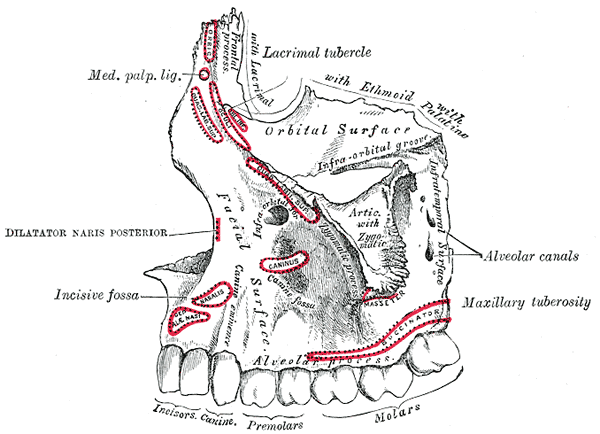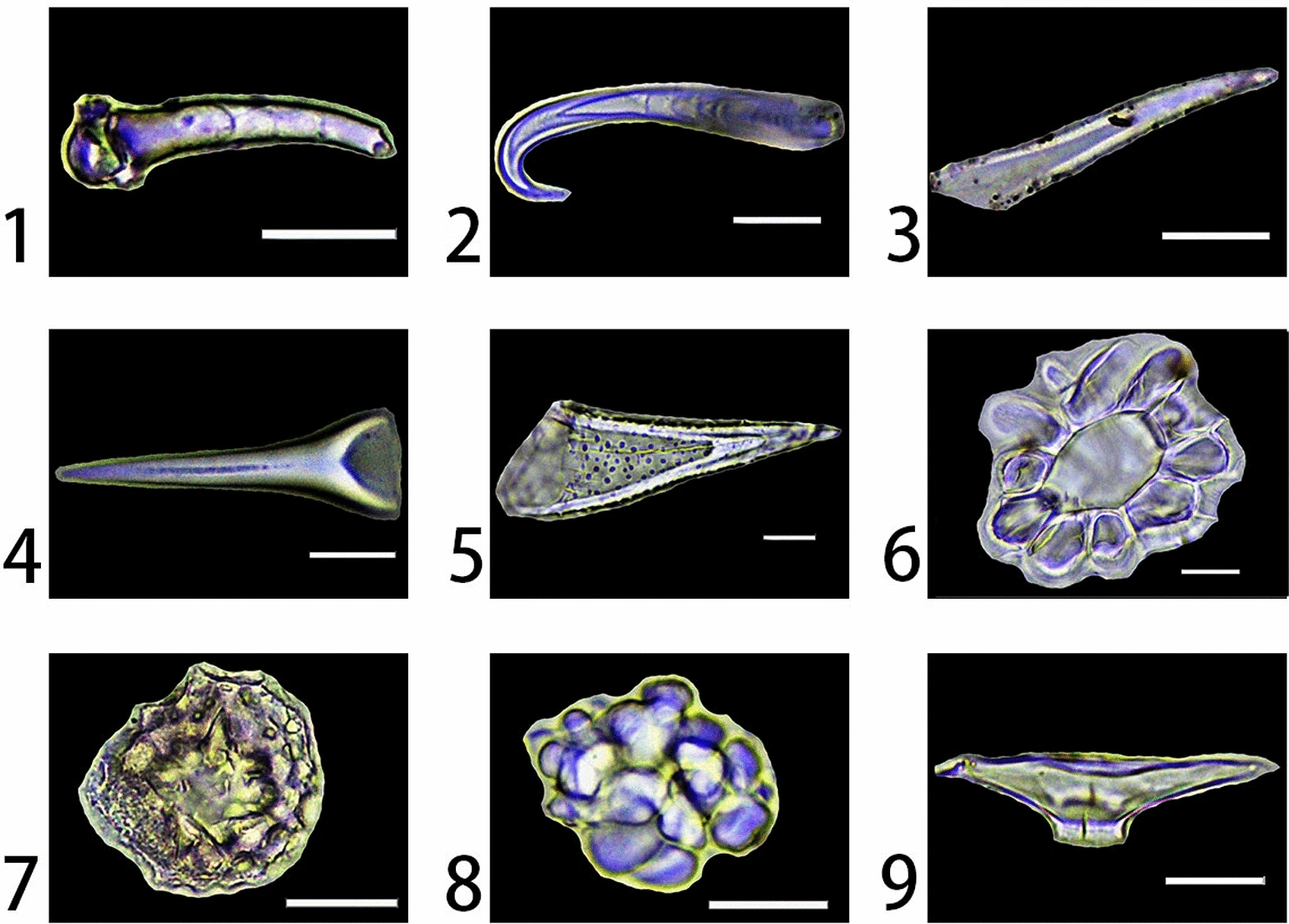|
Dental Microwear
Dental microwear analysis is a method to infer diet and behavior in extinct animals, especially in fossil specimens. Typically, the patterns of pits and scratches on the occlusal or buccal surface of the enamel are compared with patterns observed in extant species to infer ecological information. Hard foods in particular can lead to distinctive patterns (although see below). Microwear can also be used for inferring behavior, especially those related to the non-masticatory use of teeth as 'tools'. Other uses include investigating weaning in past populations. Methods used to collect data initially involved a microscope and manually collecting information on individual microwear features, but software to automatically collect data have improved markedly in recent years. Potential issues and on-going debates * The role of phytolith Phytoliths (from Greek, "plant stone") are rigid, microscopic structures made of silica, found in some plant tissues and persisting after the decay of ... [...More Info...] [...Related Items...] OR: [Wikipedia] [Google] [Baidu] |
Fossil
A fossil (from Classical Latin , ) is any preserved remains, impression, or trace of any once-living thing from a past geological age. Examples include bones, shells, exoskeletons, stone imprints of animals or microbes, objects preserved in amber, hair, petrified wood and DNA remnants. The totality of fossils is known as the ''fossil record''. Paleontology is the study of fossils: their age, method of formation, and evolutionary significance. Specimens are usually considered to be fossils if they are over 10,000 years old. The oldest fossils are around 3.48 billion years old to 4.1 billion years old. Early edition, published online before print. The observation in the 19th century that certain fossils were associated with certain rock strata led to the recognition of a geological timescale and the relative ages of different fossils. The development of radiometric dating techniques in the early 20th century allowed scientists to quantitatively measure the ... [...More Info...] [...Related Items...] OR: [Wikipedia] [Google] [Baidu] |
Occlusion (dentistry)
Occlusion, in a dental context, means simply the contact between teeth. More technically, it is the relationship between the maxillary (upper) and mandibular (lower) teeth when they approach each other, as occurs during chewing or at rest. Static occlusion refers to contact between teeth when the jaw is closed and stationary, while dynamic occlusion refers to occlusal contacts made when the jaw is moving. The masticatory system also involves the periodontium, the TMJ (and other skeletal components) and the neuromusculature, therefore the tooth contacts should not be looked at in isolation, but in relation to the overall masticatory system. Anatomy of Masticatory System One cannot fully understand occlusion without an in depth understanding of the anatomy including that of the teeth, TMJ, musculature surrounding this and the skeletal components. The Dentition and Surrounding Structures The human dentition consists of 32 permanent teeth and these are distributed between the ... [...More Info...] [...Related Items...] OR: [Wikipedia] [Google] [Baidu] |
Buccal Space
The buccal space (also termed the buccinator space) is a fascial space of the head and neck (sometimes also termed fascial tissue spaces or tissue spaces). It is a potential space in the cheek, and is paired on each side. The buccal space is superficial to the buccinator muscle and deep to the platysma muscle and the skin. The buccal space is part of the subcutaneous space, which is continuous from head to toe. Structure Boundaries The boundaries of each buccal space are: * the angle of the mouth anteriorly, * the masseter muscle posteriorly, * the zygomatic process of the maxilla and the zygomaticus muscles superiorly, * the depressor anguli oris muscle and the attachment of the deep fascia to the mandible inferiorly, * the buccinator muscle medially (the buccal space is superficial to the buccinator), * the platysma muscle, subcutaneous tissue and skin laterally (the space is deep to platysma). Communications * to the pterygomandibular space, infratemporal space, submassete ... [...More Info...] [...Related Items...] OR: [Wikipedia] [Google] [Baidu] |
Extant Species
Neontology is a part of biology that, in contrast to paleontology, deals with living (or, more generally, '' recent'') organisms. It is the study of extant taxa (singular: extant taxon): taxa (such as species, genera and families) with members still alive, as opposed to (all) being extinct. For example: * The moose (''Alces alces'') is an extant species, and the dodo (''Raphus cucullatus'') is an extinct species. * In the group of molluscs known as the cephalopods, there were approximately 600 extant species and 7,500 extinct species. A taxon can be classified as extinct if it is broadly agreed or certified that no members of the group are still alive. Conversely, an extinct taxon can be reclassified as extant if there are new discoveries of living species ("Lazarus species"), or if previously-known extant species are reclassified as members of the taxon. Most biologists, zoologists, and botanists are in practice neontologists, and the term neontologist is used largely ... [...More Info...] [...Related Items...] OR: [Wikipedia] [Google] [Baidu] |
Tooth
A tooth ( : teeth) is a hard, calcified structure found in the jaws (or mouths) of many vertebrates and used to break down food. Some animals, particularly carnivores and omnivores, also use teeth to help with capturing or wounding prey, tearing food, for defensive purposes, to intimidate other animals often including their own, or to carry prey or their young. The roots of teeth are covered by gums. Teeth are not made of bone, but rather of multiple tissues of varying density and hardness that originate from the embryonic germ layer, the ectoderm. The general structure of teeth is similar across the vertebrates, although there is considerable variation in their form and position. The teeth of mammals have deep roots, and this pattern is also found in some fish, and in crocodilians. In most teleost fish, however, the teeth are attached to the outer surface of the bone, while in lizards they are attached to the inner surface of the jaw by one side. In cartilaginous fish, s ... [...More Info...] [...Related Items...] OR: [Wikipedia] [Google] [Baidu] |
Weaning
Weaning is the process of gradually introducing an infant human or another mammal to what will be its adult diet while withdrawing the supply of its mother's milk. The process takes place only in mammals, as only mammals produce milk. The infant is considered to be fully weaned once it is no longer fed by any breast milk (or bottled substitute). Humans In some cultures, weaning progresses with the introduction of feeding the child food that has been prechewed by the parent along with continued breastfeeding, a practice known as premastication. The practice was important throughout human history in that it naturally gave a child a greatly improved protein source in addition to preventing iron deficiency. However, premasticated food from caregivers of lower socioeconomic status in areas of endemic diseases can result in the passing of the disease to the child. How and when to wean a human infant is controversial. The American Academy of Pediatrics recommends feeding a baby on ... [...More Info...] [...Related Items...] OR: [Wikipedia] [Google] [Baidu] |
Phytolith
Phytoliths (from Greek, "plant stone") are rigid, microscopic structures made of silica, found in some plant tissues and persisting after the decay of the plant. These plants take up silica from the soil, whereupon it is deposited within different intracellular and extracellular structures of the plant. Phytoliths come in varying shapes and sizes. Although some use "phytolith" to refer to all mineral secretions by plants, it more commonly refers to siliceous plant remains. In contrast, mineralized calcium secretions in cacti are composed of calcium oxalates.Piperno, Dolores R. (2006). Phytoliths: A Comprehensive Guide for Archaeologists and Paleoecologists. AltaMira Press . The silica is absorbed in the form of monosilicic acid (Si(OH)4), and is carried by the plant's vascular system to the cell walls, cell lumen, and intercellular spaces. Depending on the plant taxa and soil condition, absorbed silica can range from 0.1% to 10% of the plant's total dry weight. When deposited, ... [...More Info...] [...Related Items...] OR: [Wikipedia] [Google] [Baidu] |





